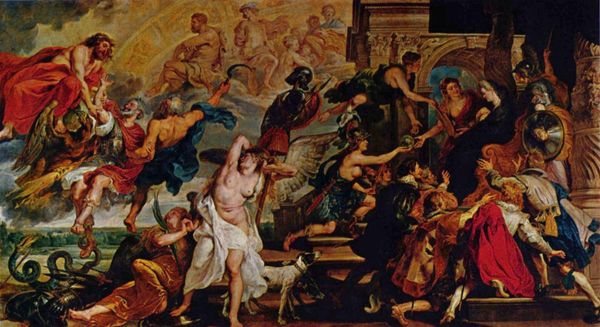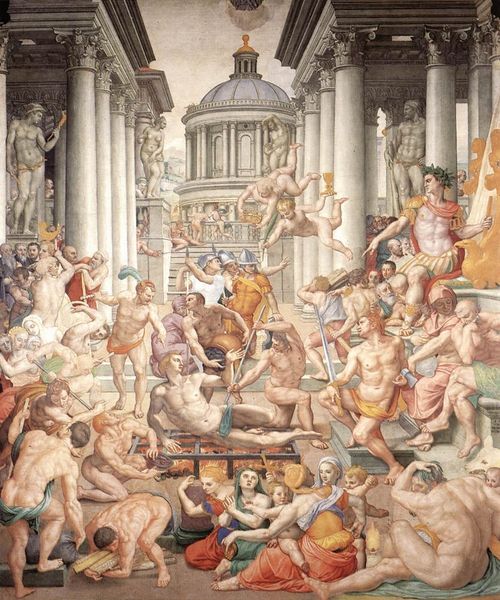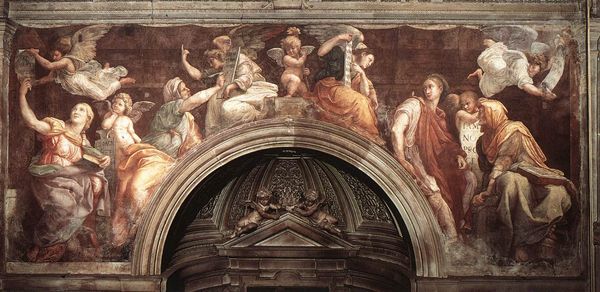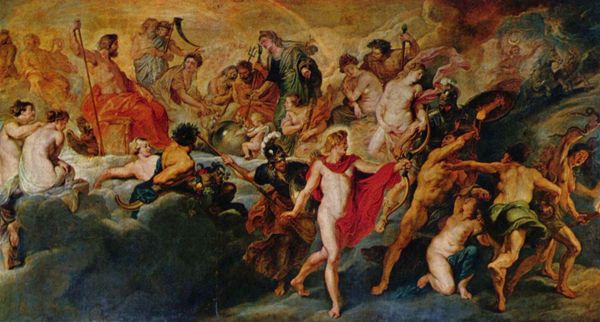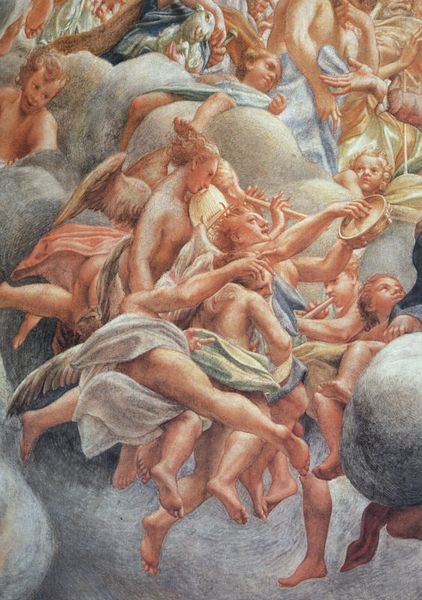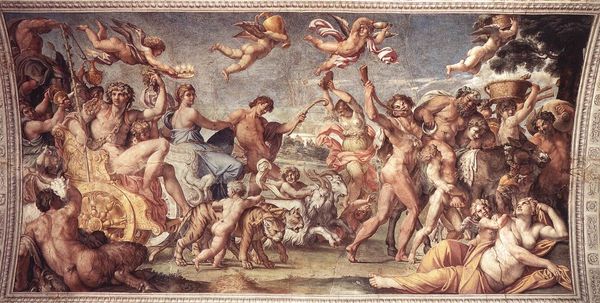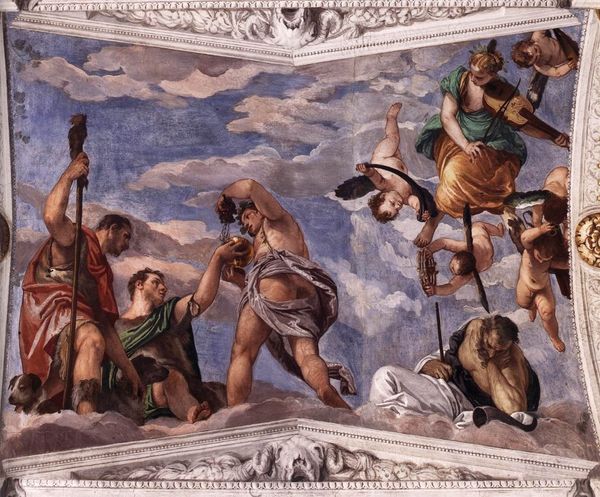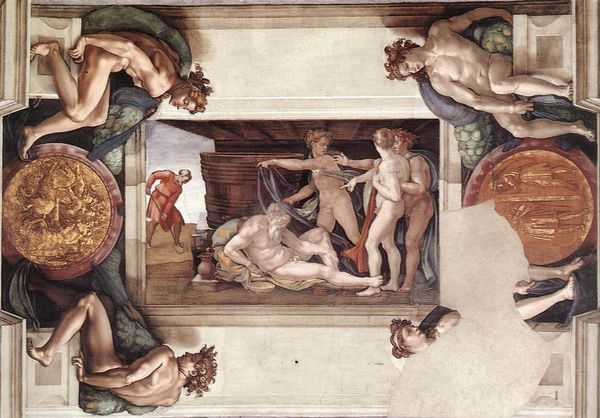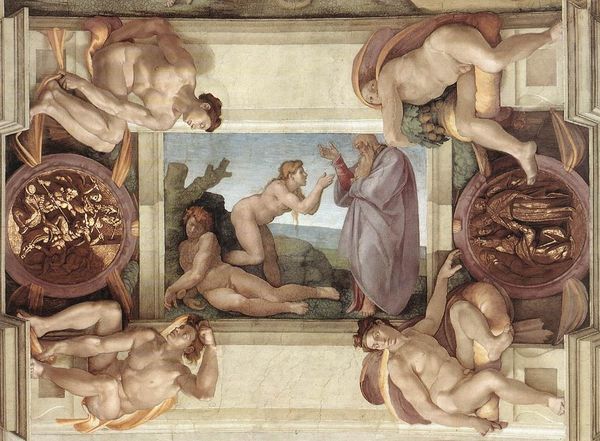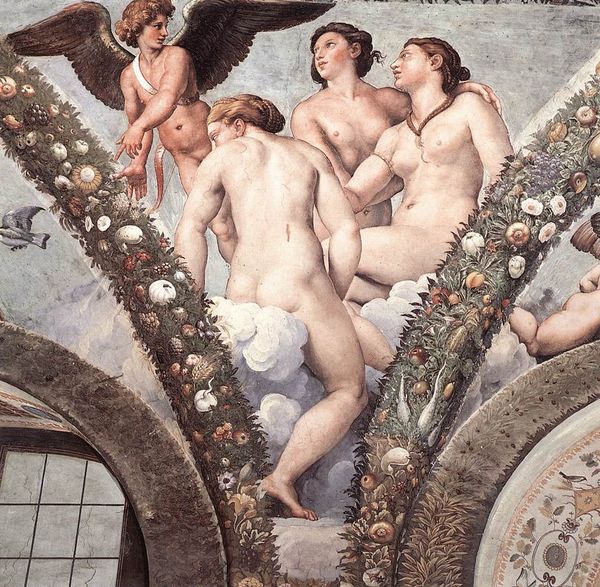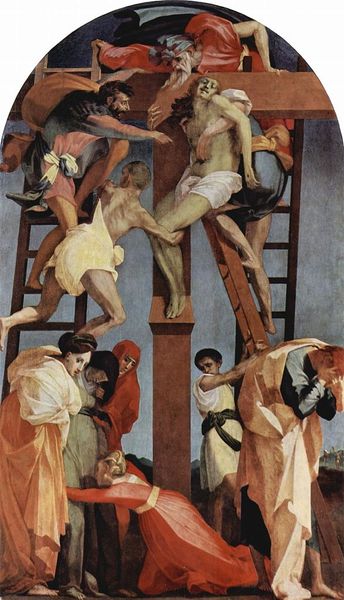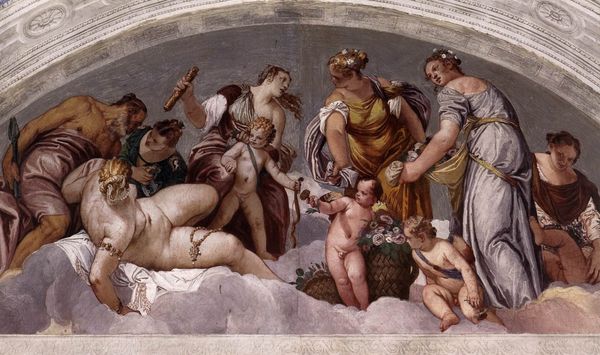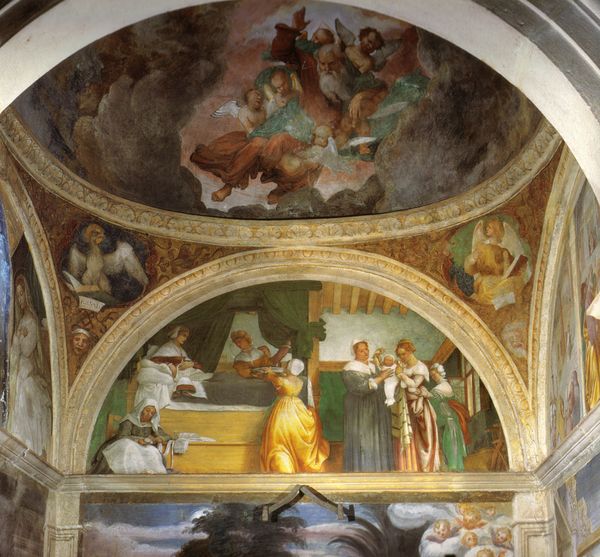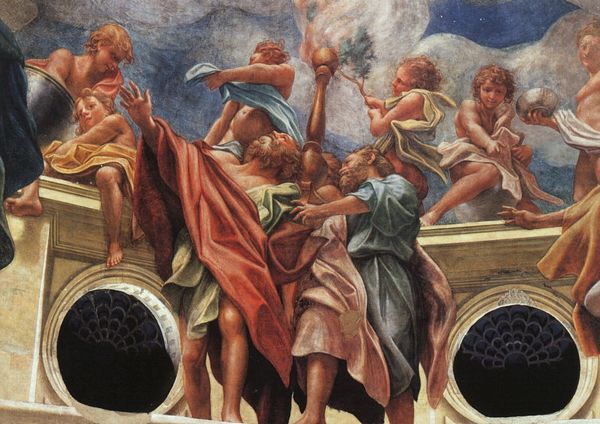
oil-paint
#
high-renaissance
#
allegory
#
oil-paint
#
figuration
#
oil painting
#
history-painting
#
italian-renaissance
#
nude
Copyright: Public domain
Curator: Immediately, there’s a swirling, almost vertiginous sense of upward motion in this piece. It’s rather disorienting at first glance. Editor: Precisely! We're observing here a work entitled "Apostles and Angels at the Assumption", attributed to Correggio. The medium appears to be oil paint. Now, consider how that sense of disorientation might relate to the painting's thematic content. Curator: I’m captivated by the light. It emanates from an unseen source above, creating a chiaroscuro effect that sculpts the figures. Note the way the drapery clings and falls, directing our gaze upward, further emphasizing the dynamism. Editor: Absolutely. Correggio uses the drapery symbolically, yes, but it also enhances the formal structure. Let’s look at the iconography. The apostles, gazing upward in astonishment, represent the earthly realm. Their expressions—a mixture of awe and confusion—suggest their limited understanding of the divine mystery unfolding above. They witness Mary's assumption into heaven, which represents salvation and transformation. Curator: Observe the angels, positioned higher in the composition; the dynamism continues there, adding a sense of levity. The colors become lighter, airier, conveying a spiritual transcendence through visual means. The materiality shifts. The brushstrokes feel looser, less defined. It is clear that these details contribute to a reading of ethereal divinity. Editor: Indeed. Angels traditionally signify messengers between heaven and Earth. The torches held aloft likely symbolize enlightenment, a divine revelation, and guide the ascent. And there is an allegorical aspect at play. The gestures communicate, too. I am interested in what we are invited to bring into this piece as the viewer: an emotional response to something ineffable. Curator: Agreed. There's an inherent tension. It’s not a static depiction, but an energetic invitation upwards—formally rendered by the shifting values, the texture of the paint itself... I am, however, curious if any sketches for it remain. Editor: Perhaps there is yet more that is unseeable within. Let us end on that tantalizing question. Thank you.
Comments
No comments
Be the first to comment and join the conversation on the ultimate creative platform.
